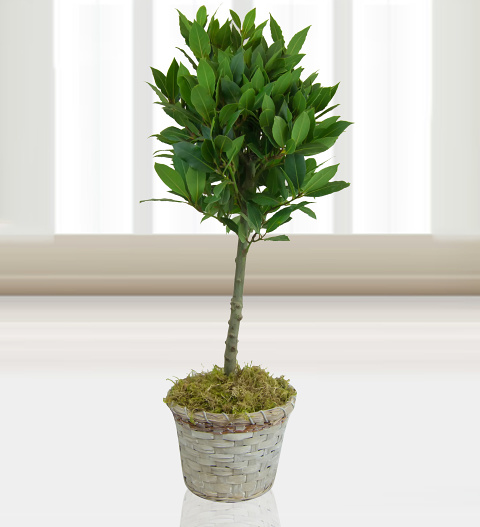
Potted bay tree care
Like any other type of potted plant, bay trees require conditions and care that will help them thrive. Without proper watering, the right amount of sunlight and other forms of care, your bay tree could end up withering and dying. If you receive a bay tree as a gift or if you buy bay tfor yourself, here are some important container cultivation tips.
Compost
Your bay tree will love a soil-based compost or a soilless compost with extra grit. This helps improve the stability and drainage of the potted plant. A controlled-release fertiliser can also be added to the compost. Alternatively, you can use a liquid feed every two weeks from mid-spring to late in the summer season. Over time, compost will break down. So, even if you don’t repot regularly, you should lift the plant out of the pot and tease off approximately one third of the roots. Add fresh compost and check the drainage of the pot before placing the plant back in its home. Top with an additional 5cm of compost.
Watering
All plants need water in order to survive. That said, if you over-water, it will cause the roots to rot. This is why moderate watering and proper drainage are essential for your bay tree’s health. In most cases, you will need to water more frequently during the warmer months and not as often in winter.
Repotting
Your bay tree should be repotted every two years. This should be done in the spring season. Make sure that the base of the container is raised off the ground. You can use pot feet or even bricks to let the excess water drain away.
Temperatures
Bay trees can withstand temperatures as cold as -5°C. Frost and cold winds can damage the foliage. You can protect your plant with fleece or you can bring the plant indoors during the winter season. The roots of any potted plant are particularly susceptible to freezing because the plant is not in the ground. The pot is exposed to the cold and this causes the temperature of the soil to drop too. You can prevent this from happening by wrapping your pot in bubble wrap.
In the spring season, you will notice that your plant should produce greenish-yellow flowers. The female plants will produce black berries as the flowers perish.
